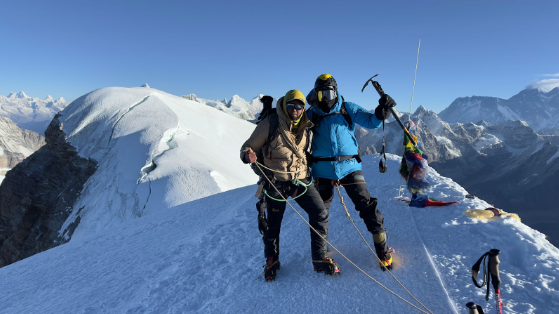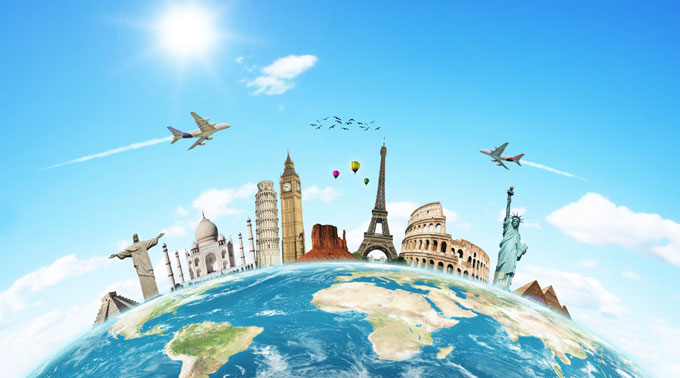Nepal is a paradise for mountaineers, offering some of the most iconic climbs in the world. Among its many peaks, Mera Peak (6,476 meters) stands out as the highest trekking peak in Nepal, attracting adventurers from across the globe. Located in the Mahalangur section of the Himalayas, Mera Peak offers stunning panoramic views of five of the world’s 8,000-meter giants, including Everest, Kanchenjunga, Lhotse, Makalu, and Cho Oyu.
In this comprehensive guide, we’ll cover everything you need to know about Mera Peak climbing—from why it’s a popular choice to best routes, costs, equipment, and expert tips for a safe and successful summit.
Why Choose Mera Peak Climbing?
Mera Peak is often considered a perfect introduction to Himalayan mountaineering. Here’s why:
- Highest Trekking Peak in Nepal: At 6,476 meters, it provides a genuine high-altitude experience.
- Spectacular Views: Enjoy 360° vistas of the Everest region, including towering giants like Lhotse and Makalu.
- Less Technical: Though physically demanding, the climb is technically easier compared to other peaks, making it suitable for fit trekkers with basic mountaineering skills.
- Cultural Experience: The trek passes through remote Sherpa villages and lush valleys, offering a rich cultural immersion.
Where is Mera Peak Located?
Mera Peak lies in the Hinku Valley of the Everest region, within the Makalu Barun National Park. Unlike Everest Base Camp, the route to Mera Peak is quieter and less crowded, making it ideal for those who want to escape the busy trails.
Best Time for Mera Peak Climbing
The two main climbing seasons are:
- Spring (March to May): Clear skies, stable weather, and beautiful blooming rhododendrons.
- Autumn (September to November): Best season for stable weather and excellent visibility.
Winter (December–February) and monsoon (June–August) are generally avoided due to harsh conditions and poor visibility.
How Difficult is Mera Peak Climbing?
Mera Peak climbing is classified as a trekking peak, but don’t be fooled—it still requires good preparation. Here’s what you should know:
- Altitude: At nearly 6,500 meters, altitude sickness is a real concern.
- Physical Fitness: Expect long days of trekking with steep ascents. Endurance training is essential.
- Technical Skills: The final summit push involves walking on glaciers using crampons, ice axe, and rope systems. Basic mountaineering skills are needed, but it’s less technical than other Himalayan climbs like Island Peak.
Mera Peak Climbing Itinerary (Sample 18 Days)
Day 1: Arrival in Kathmandu and briefing.
Day 2: Flight to Lukla and trek to Chutanga.
Day 3-4: Acclimatization days with short hikes.
Day 5-8: Trek through Hinku Valley, enjoying Sherpa culture and alpine scenery.
Day 9-10: Reach Khare (Base Camp) and acclimatize.
Day 11: Mera High Camp (5,800m).
Day 12: Summit Day! Early start to reach Mera Peak summit and return to Khare.
Day 13-16: Trek back to Lukla.
Day 17: Flight to Kathmandu.
Day 18: Departure.
(Note: Itinerary varies based on operator and weather conditions.)
Permits Required for Mera Peak Climbing
- Nepal Mountaineering Association (NMA) Climbing Permit: USD 250 (spring), USD 125 (autumn), USD 70 (winter/summer).
- Makalu Barun National Park Entry Permit: NPR 3,000 (approx. USD 25).
- Local Area Permit: NPR 2,000 (approx. USD 17).
Accommodation and Food During the Trip
- Lower Altitudes: Comfortable teahouses offering local meals and cozy rooms.
- High Camps: Tented accommodation with basic but warm facilities.
- Meals: Dal Bhat (rice and lentils), noodles, pasta, soups, and hot beverages are common on the trail.
Gear and Equipment for Mera Peak Climbing
Here’s a quick list of essentials:
- Clothing: Down jacket, thermal layers, windproof shell, trekking pants.
- Footwear: Mountaineering boots, gaiters, and crampons.
- Technical Gear: Ice axe, harness, helmet, rope, and carabiners (usually provided by your operator).
- Other Essentials: Sleeping bag (-20°C rating), trekking poles, headlamp, sunglasses, sunscreen.
Cost of Mera Peak Climbing
The price depends on the duration, services, and operator, but here’s an estimate:
- Guided Group Expedition: USD 2,000 – 3,500 per person.
- Includes: Permits, guide, porter, meals, accommodation, internal flights, technical equipment rental.
- Excludes: International flights, personal gear, travel insurance, tips, and extra expenses.
Training and Preparation Tips
- Cardio Training: Hiking, running, and cycling to build endurance.
- Strength Training: Focus on legs, core, and upper body for carrying loads.
- Altitude Practice: If possible, hike at high elevations before the trip.
- Technical Skills: Learn basic rope work, crampon walking, and self-arrest techniques.
Why Mera Peak Should Be on Your Bucket List
- Experience a 6,000m+ climb without extreme technical challenges.
- Witness unparalleled Himalayan panoramas from the summit.
- Enjoy a blend of adventure and culture in a less crowded region.
- Perfect stepping stone for future climbs like Island Peak or Ama Dablam.
Conclusion
Mera Peak climbing is the ultimate adventure for trekkers seeking to transition into high-altitude mountaineering. With its impressive height, non-technical route, and breathtaking views of five 8,000-meter peaks, Mera Peak offers an unforgettable Himalayan experience. While it’s less technical, the climb demands proper preparation, acclimatization, and expert guidance. For those ready to challenge themselves, Mera Peak is more than a climb—it’s a journey into the heart of the Himalayas, filled with adventure, culture, and unmatched beauty.
Key Takeaways
- Height: 6,476 meters—the highest trekking peak in Nepal.
- Difficulty: Physically demanding but less technical.
- Best Time: Spring (March–May) and Autumn (Sept–Nov).
- Cost: USD 2,000–3,500 for a guided expedition.
- Main Highlights: Stunning views of Everest, Makalu, and Kanchenjunga.
FAQs
- Do I need prior climbing experience for Mera Peak?
Basic mountaineering skills are recommended, but prior high-altitude trekking experience is essential. - How long does it take to climb Mera Peak?
Typically, 18–20 days, including acclimatization and trekking. - Is Mera Peak harder than Island Peak?
Mera Peak is higher but technically easier compared to Island Peak. - Can I climb Mera Peak solo?
Technically yes, but strongly discouraged for safety reasons. Hiring a guide is highly recommended. - Is travel insurance mandatory?
Yes, comprehensive insurance covering high-altitude evacuation is essential.










